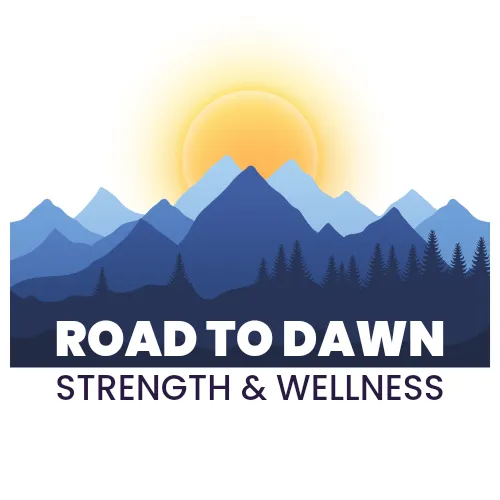The Overcoming Obstacles Blog

Skier's or Gamekeeper's or Thumb Sprain: All Names For The Same Thing
"Healing takes courage, and we all have courage, even if we have to dig a little to find it." – Tori Amos
Understanding Thumb Sprains: Causes, Risks, and Solutions
Your thumb is a critical part of almost every activity you do, from gripping a barbell to swinging across monkey bars. When it’s injured, it can feel like everything comes to a grinding halt. One of the most common injuries to the thumb is a thumb sprain — a condition that can affect not just your training but also your day-to-day life.
In this blog post, we’ll cover what a thumb sprain is (and other names it’s called), how it happens, the risk factors, how to treat it, and how it can affect obstacle course racing, hybrid athletics, and your overall quality of life.
What Is a Thumb Sprain?
A thumb sprain occurs when the ligaments that support the thumb’s joints are stretched or torn. This typically happens in the ulnar collateral ligament (UCL) of the thumb, which stabilizes the joint at the base of your thumb. A severe injury to this ligament is sometimes referred to as "skier's thumb" or **"gamekeeper’s thumb."
Common Other Names for Thumb Sprains:
Skier’s Thumb: Named for its frequent occurrence in skiing accidents.
Gamekeeper’s Thumb: Refers to repetitive stress injuries to the UCL, historically associated with gamekeepers who used their thumbs repeatedly while handling animals.
How Common Is a Thumb Sprain?
Thumb sprains are relatively common among athletes and active individuals. In sports involving high-impact grips or falls, like obstacle course racing (OCR) or hybrid athletics, thumb injuries can occur regularly. Among skiers, thumb sprains account for up to 10% of all hand injuries. They are also common in activities involving heavy lifting or repetitive use of the thumb.
How Does a Thumb Sprain Happen?
Thumb sprains usually result from a sudden force that bends the thumb backward or sideways beyond its normal range of motion. Some common scenarios include:
Falls: Landing on an outstretched hand with the thumb extended.
Sports Injuries: Catching the thumb on an obstacle, barbell, or during a fall in OCR.
Repetitive Stress: Chronic overuse of the thumb in gripping or pulling motions.
The severity of a thumb sprain is categorized into three grades:
Grade 1: Mild stretching of the ligament.
Grade 2: Partial tearing of the ligament.
Grade 3: Complete tear of the ligament, often requiring surgical intervention.
Treatment for Thumb Sprains
The good news is that most thumb sprains can heal with proper care and rehabilitation. Here’s how to manage it:
1. Immediate Care
PEACE & LOVE: protect the injury early on and prevent painful activities so it does not get worse, elevate and compress it with a brace of some kind, avoid anti-inflammatories to allow inflammation to happen naturally and educate yourself on how long the injury can last.
2. Rehabilitation
Once the acute pain and swelling have subsided, rehab is crucial to restore strength and mobility:
Strengthening Exercises: Use resistance bands or putty to strengthen the thumb and surrounding muscles.
Range of Motion Work: Gentle stretches and movements to regain mobility without overstressing the ligament.
Grip Training: Gradually reintroduce grip-strengthening exercises as the thumb heals.
3. Medical Treatment for Severe Cases
If the ligament is completely torn (Grade 3), surgery may be required to repair or reconstruct the ligament. Physical therapy will follow to regain full function.
How Thumb Sprains Affect Obstacle Course Racing and Hybrid Athletics
Thumb sprains can have a significant impact on your performance in OCR and hybrid events:
Grip Strength: Nearly every obstacle, from monkey bars to rope climbs, requires a firm and stable grip. A sprained thumb limits your ability to hang, pull, or hold onto objects.
Lifting and Carrying: Hybrid athletes rely heavily on their grip for deadlifts, kettlebell swings, and farmer’s carries. A thumb injury can make these movements not just difficult but unsafe.
Confidence: Knowing your thumb is compromised can make you hesitant and cautious for all these obstacles, affecting your overall performance.
How Thumb Sprains Affect Daily Life
A sprained thumb can also create challenges in everyday activities:
Basic Tasks: Activities like opening jars, typing, or even brushing your teeth can become painful.
Work Limitations: If your job involves using your hands extensively, a thumb sprain can significantly hinder productivity.
Long-Term Implications: Without proper care, thumb sprains can lead to chronic instability, arthritis, or reduced function over time.
How to Prevent Thumb Sprains
While accidents can’t always be avoided, there are steps you can take to minimize the risk of a thumb sprain:
Warm Up Properly: Ensure your hands and wrists are warmed up before training or competing.
Strengthen Your Hands and Wrists: Incorporate grip and forearm strength exercises into your routine.
Use Proper Technique: Avoid overloading your grip and learn proper falling techniques to reduce the risk of thumb injuries.
Wear Support: For activities like skiing or OCR, consider wearing gloves with added thumb support.
The Takeaway
A thumb sprain might seem like a small injury, but its impact can ripple through your training and daily life. The good news is that with proper care, rehab, and prevention strategies, you can recover fully and get back to doing what you love.
If you’re dealing with a thumb sprain, don’t ignore it. Treat it early, and take the necessary steps to ensure your recovery is as strong as your performance will be when you return.
If you'd like to learn about my recovery from a thumb sprain, or if you're struggling with your own injury, don't wait. Book your call here: https://roadtodawnwellness.com/book-page-7052

QUICK LINKS
GET IN TOUCH
Home Base: Little Chute, WI
(516) 924-6062
Monday - Saturday : 8:00 - 5:00
© 2024 Road to Dawn Strength and Wellness